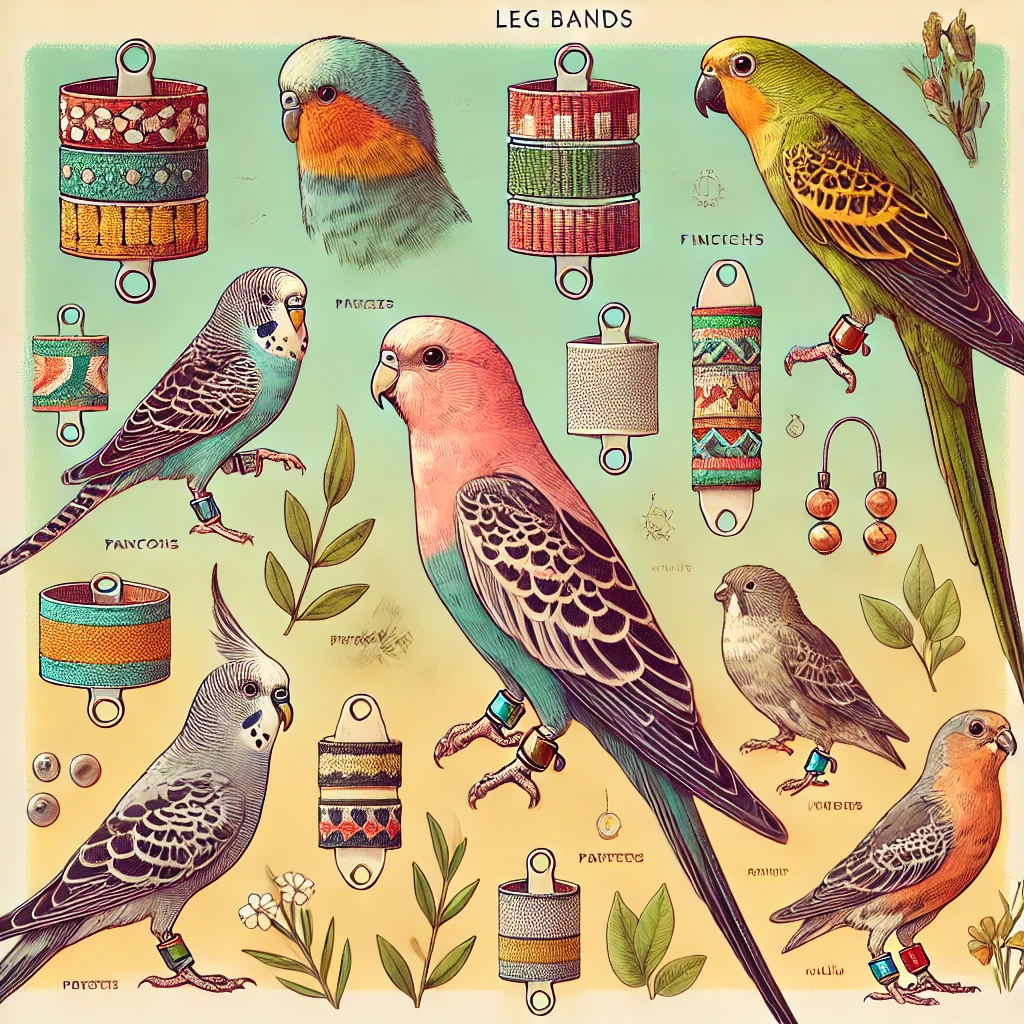Bird identification and tracking are critical for conservation, scientific research, and even avian breeding programs. One of the most effective tools used in this process is leg bands for birds. These small, lightweight rings attached to a bird’s leg serve multiple functions, from identifying individual birds to studying their migration patterns and health status. In this article, we explore the advantages of using bird leg bands, how they aid research and conservation, and why they are essential tools for ornithologists, breeders, and bird watchers alike.
1. Enhancing Bird Identification
Leg bands are widely used for the identification of individual birds. Each band has a unique code, often including numbers or letters, allowing researchers and bird owners to distinguish one bird from another. This is especially useful for:
- Ornithologists tracking wild bird populations
- Bird breeders managing lineage and genetics
- Pet bird owners identifying lost or stolen birds
For example, the U.S. Geological Survey’s Bird Banding Laboratory has been using leg bands since 1920 to track avian populations and study their habits.
2. Aiding in Scientific Research and Migration Studies
Leg bands play a crucial role in tracking bird movements and migration patterns. By banding birds and recapturing them at different locations, scientists can determine migration routes, breeding sites, and wintering grounds. Studies have shown that banding has helped uncover migration mysteries of species like:
- Arctic Terns, which travel over 44,000 miles annually
- Swainson’s Hawks, migrating between North and South America
- Bar-tailed Godwits, making non-stop flights of over 7,000 miles
These insights help researchers understand the impact of climate change and habitat destruction on bird populations.
3. Improving Conservation Efforts
Bird leg bands contribute significantly to conservation initiatives by providing data on bird populations, breeding success, and survival rates. Many endangered species, such as the California Condor and Whooping Crane, have been successfully monitored and protected using banding programs. Conservationists can use banding data to:
- Assess population declines
- Identify critical habitats
- Implement conservation strategies
For instance, the North American Bird Banding Program has banded over 77 million birds, contributing vital data for avian protection efforts.
4. Monitoring Health and Longevity
Leg bands allow researchers to study the health, lifespan, and reproductive success of birds. By analyzing data from recaptured or sighted birds, scientists can track disease outbreaks, detect environmental hazards, and measure aging in different species. Some notable findings include:
- The oldest recorded banded wild bird, a Laysan Albatross named Wisdom, is over 70 years old.
- Banding has helped identify lead poisoning in swans and pesticide exposure in raptors.
By keeping detailed records, researchers can take proactive steps to protect bird populations from emerging threats.
5. Supporting Bird Breeding and Aviculture
In avian breeding programs, leg bands are essential for managing lineage and genetic diversity. Breeders use closed bands (placed on young birds before their legs are fully grown) to:
- Track parentage and prevent inbreeding
- Maintain accurate breeding records
- Comply with legal requirements, especially for endangered or exotic species
For example, in parrot breeding programs, leg bands help breeders confirm a bird’s origin and prevent illegal wildlife trade.
6. Facilitating Rescue and Recovery of Lost Birds
Leg bands serve as a critical identification tool for lost, stolen, or injured birds. If a banded pet bird escapes, the unique ID number can help in its recovery. Similarly, wildlife rescue organizations use bands to identify rehabilitated birds and track their post-release success.
7. Legal Compliance and Regulatory Benefits
Many regions require leg bands for birds, especially for:
- Exotic or protected species to ensure legal ownership
- Poultry farms to comply with tracking regulations
- Falconry to authenticate trained birds
For example, in the United States, leg bands are mandated for birds covered under the Migratory Bird Treaty Act to prevent illegal poaching and trade.
Types of Bird Leg Bands
Several types of leg bands are available, each suited for different applications:
- Aluminum Bands: Used for research and conservation; lightweight and durable.
- Plastic Color Bands: Used for visual identification in the field.
- Split Bands: Easy to apply and remove for short-term studies.
- Closed Bands: Permanent bands used for bird breeding programs.
Conclusion
Using leg bands for birds offers numerous benefits, from improving identification and scientific research to enhancing conservation and aviculture efforts. These small but powerful tools provide invaluable data that helps protect avian species and understand their behaviors. Whether you are a bird researcher, breeder, or enthusiast, leg bands are a critical asset for monitoring and safeguarding bird populations.
Would you consider using leg bands for your bird research or breeding program? Let us know in the comments!











Leave a Reply